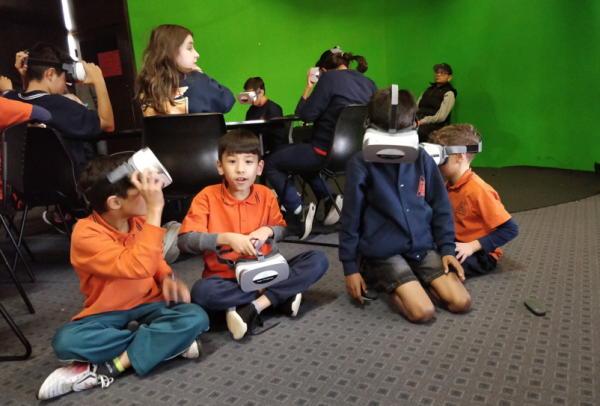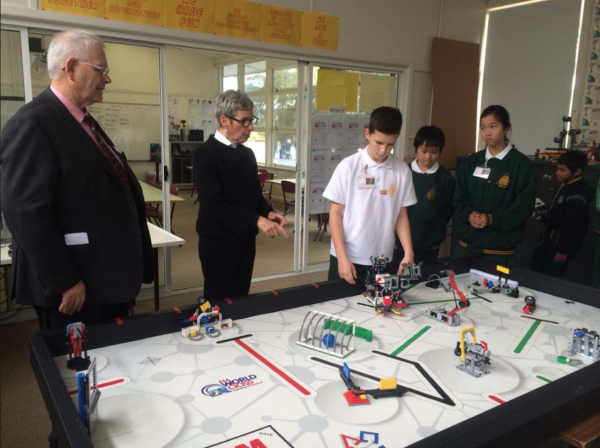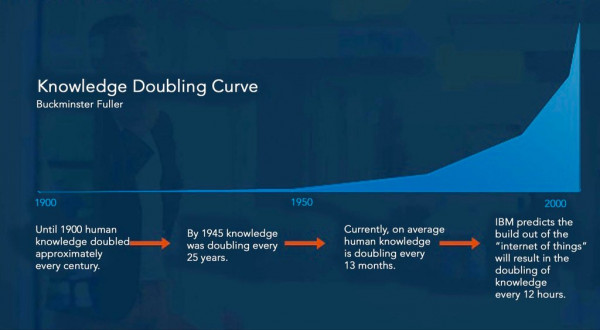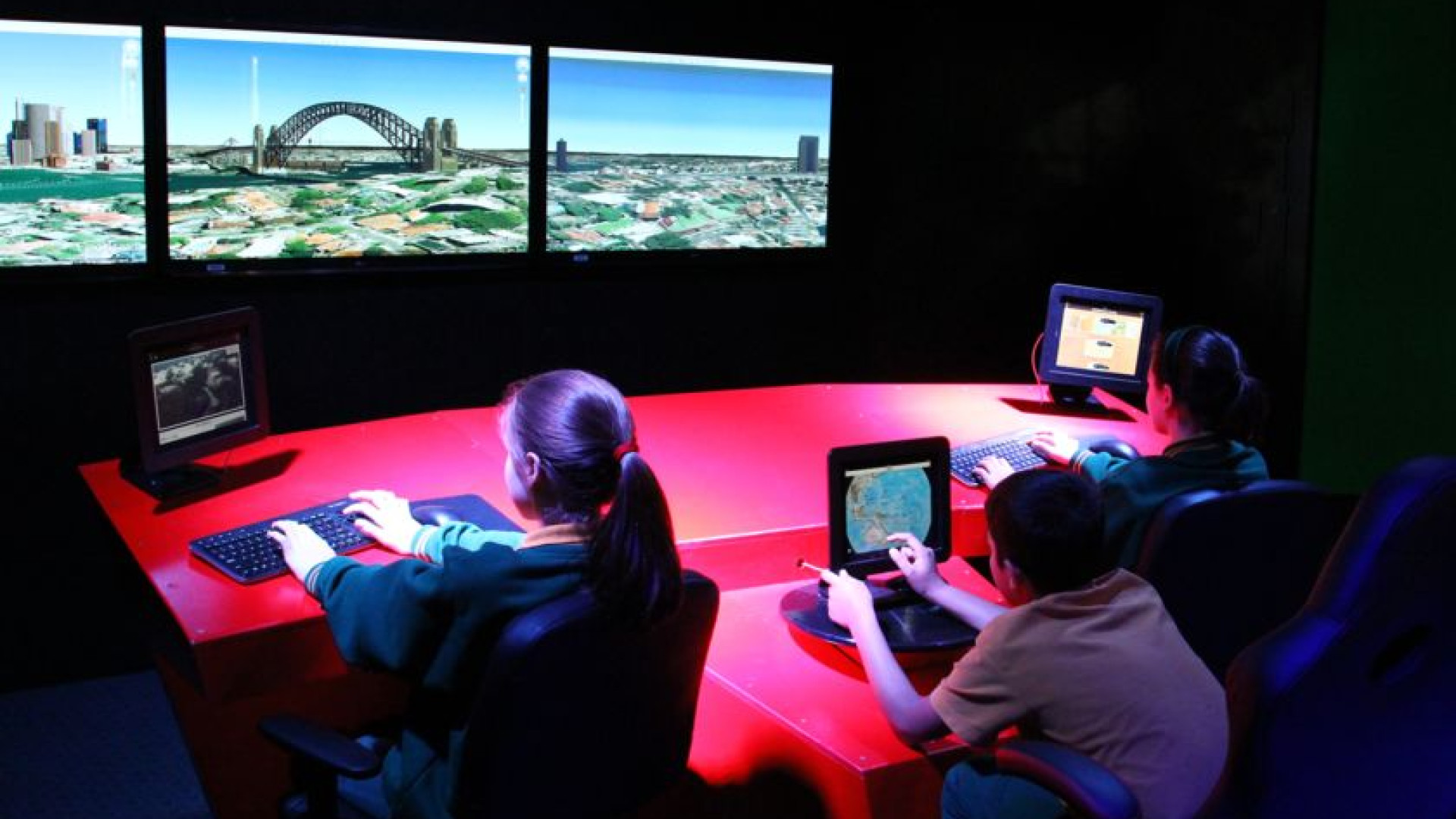On a recent visit to Melbourne, I was privileged enough to visit Wooranna Park Primary in Dandenong. Privileged!? A visit to a primary school isn’t typically wrapped with the word ‘privileged’ – particularly if (as a parent) you make daily trips to your own – so let me explain.
On visiting the primary school, our group was welcomed by the Principal (Ray Trotter) and Tech-Educator (Kieran Nolan). Our welcome provided the most ‘ordinary’ thing about this school, because as we stepped through the doors it was clear that the school was anything but ordinary.
Very quickly I realised this school is unlike most others. Firstly, traditional classrooms don’t exist; instead, the learning spaces are rich and engaging in their own right. Instead of rows of desks, you’re presented with learning spaces offering a real difference.
Most of the spaces have been crafted to provide engaging and immersive environments designed to spark the imagination. In one area, you’re met with a giant spaceship, complete with a flight simulator. Walking into another, you’re met by an impressive red dragon boat, designed to provide students with sea-faring adventures using Google Earth to guide them across (actual) oceans.

The area where we started our journey was fully decked out with a green screen studio and supported a large array of technology and tools to provide students with a seemingly unlimited canvas of possibilities. Fun fact: This technological space – officially named the ‘Enigma Portal’ – was democratically voted upon by students using blockchain voting – that the students set up.
To date, the school has been likened to Disneyland rather than a typical learning space – a comparison that Ray is obviously proud of. From where I sit, I can see three large flat-screen TVs – one of which is connected 24/7 to schools located in both New Zealand and Korea. In one corner, the school is creating an Augmented Reality Sandbox (of particular interest to me as we’re undertaking a similar project); whilst in another, a CISCO network suite allows students to design and build their own computer networks.

The technological toys didn’t stop there. We experienced 3D printing, Robotics, Minecraft Virtual Reality (VR) which they were programming, Google Earth experiences; and heard stories surrounding various Bitcoin endeavours and the success of their mentoring programme – in which it pairs students with industry experts (recently pairing a student interested in Black Holes with an expert at NASA). That said, not everything was driven by technology. For the non-technical, we received invitations to stroke a selection of Bearded Dragons housed within their impressive nature classroom.
Remember, this is a primary school!
Interestingly, despite all the technology, Ray is a self-proclaimed technophobe and cites his level of technical prowess as (almost) mastering his mobile. However, this mismatch of technical savviness is quickly forgotten when you listen to him speak and hear his passion for teaching, his vision, and ultimately, why he’s expanding his students’ minds.
What about the educational value?
This is where it gets interesting.
Firstly, let me start by saying I’m not (at any level) an expert on the Australian educational system. In fact, my knowledge has been gained primarily by anecdotal means and in large, through the honesty offered up by Ray and Kieran and my interpretation of their stories.
Educationally, Wooranna Park Primary is duty bound to deliver the same educational curriculum as every other Australian primary school – which they do. The primary tenets (as outlined by the government and as I understand them) are numeracy, literacy and student attendance. It’s here where Ray believes the system is failing the next generation; in doing so, passionately reminding us that the world is full of learning opportunities beyond this outlined framework.

He goes on to reference Buckminster Fuller’s ‘Knowledge Doubling Curve’ which (currently) suggests that human knowledge is doubling (roughly) every 12-months. But according to IBM the development of the ‘Internet of Things’ (IoT) will lead to a doubling of knowledge every 12-hours. Ray suggests that focusing primarily on numeracy and literacy (not forgetting attendance of course) won’t come close to preparing our children for the future.
However, this stance has come at a cost. Ray uncomfortably and honestly shares that Wooranna Park is below-average through assessment by the National Assessment Program – Literacy and Numeracy (NAPLAN). Although, through this discomfort, his passion and pride surface again when you hear the long-list the other results & accolades the school has achieved. Some of which could be argued rival the set curriculum.
Honestly, as his story unfolded, I initially perceived Ray as a bit of a ‘bad-boy’, riding down the educational highway, offering up two fingers to an educational system that he felt was failing to prepare the minds of the future. A rebel born through a long career in teaching. However, by the end of our tour, I believe him more a visionary, with both his heart and head in the right place – although still carrying a smattering of bad-boy, but only insofar as to ensure he can continue to colour outside the lines and deliver a learning environment that continues to expand his students’ minds.
Don’t get me wrong, numeracy and literacy will (obviously) remain core subjects, but our world continues to evolve. With the exponential momentum of augmented/virtual reality (AR/VR), artificial intelligence (AI), crypto-currencies and robotics (to name just a few), and the unprecedented access to new knowledge through the developing IoT – why wouldn’t we want to prepare our children? Why shouldn’t we be more prepared?
I wish Ray and Kieran all the luck in the world. They’ve inspired me. In our industry, technology changes… quickly. The solutions we deliver today won’t be the ones we provide tomorrow, and that’s exciting. It’s also encouraging to know that more digital natives are on their way, thanks to the efforts of schools like Wooranna Park.
I know this innovative approach to education won’t be for everyone. There may be flaws in the vision, glitches in the plan that are still yet to surface. From my perspective, I can’t see any – can you?
PS. I know Wooranna Park welcomes visitors to their school, so don’t be shy if you’re knocking about Melbourne and looking for something different – reach out.

